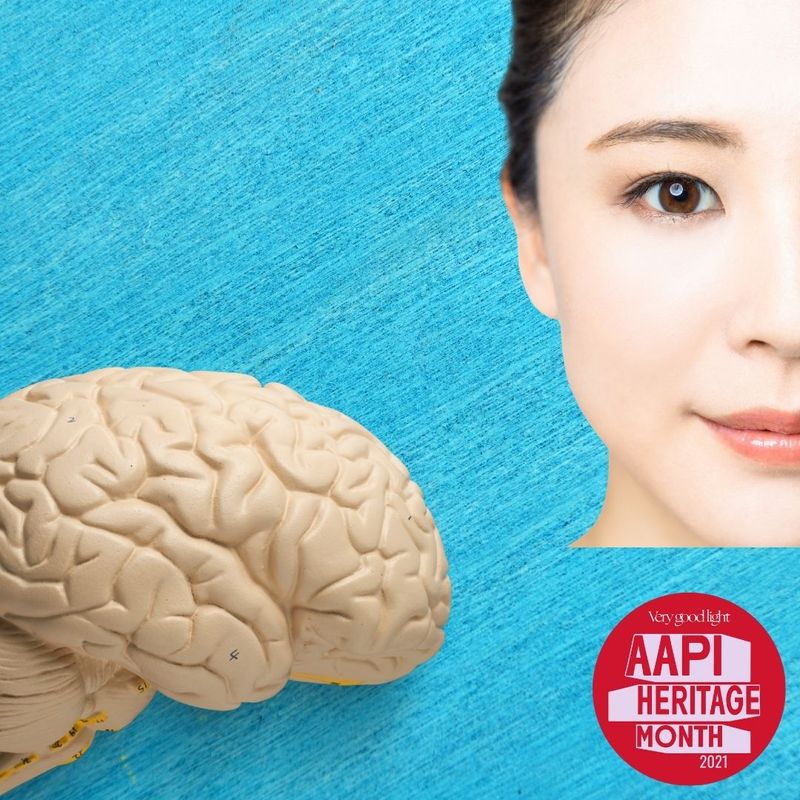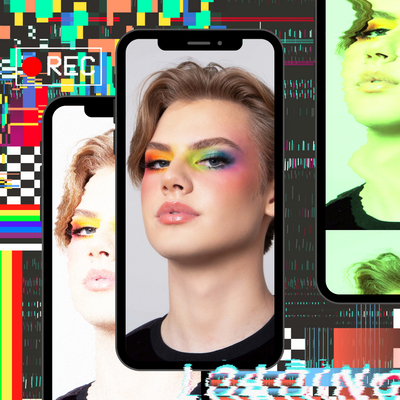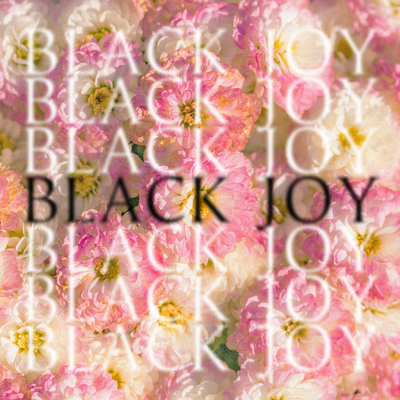May is Mental Health Awareness Month and Asian/Pacific American Heritage Month, and to celebrate the two, Very Good Light spoke to an Asian American psychotherapist about how AAPI individuals can prioritize their mental health.
Therapy, mental health, and advocating for your own wellness can sometimes feel unachievable. It can be especially difficult when facing cultural obstacles and stigmas. In the past year, the Asian American community has experienced a significant spike in hate crimes during the COVID-19 pandemic, leading to an increase in anxiety in AAPI individuals. Very Good Light spoke with Lia Huynh, LMFT, an Asian American counselor and psychotherapist about advocating for mental health in the AAPI community.
SEE ALSO: 5 Southeast Asian Americans on combating their hyper-invisibility and amplifying their voices
How to self-advocate for your mental health
Self-advocating represents doing what’s best for you, standing up for yourself, and defending your well-being. This can be done in different ways for different reasons, and is personal to your own experiences and comfort level. Self-advocating in the mental health space is any action that you are taking to better your wellness, from self-care to therapy.
Before self-advocating can even begin, you’ll first have to realize that you want to take that step. Acknowledging your feelings and emotions and assessing where to go from there is the most important part of taking care of your mental health.
“A lot of us are used to stuffing our feelings and pretending they don’t exist, because of shame, or just not knowing what to do with them,” Lia tells Very Good Light. “I often teach my clients to be okay that they are struggling and to not be ashamed of it.”
Always act in a way that feels safe and comfortable to you – this will look different for everyone.
“Some people don’t want to tell their friends, so they find a therapist,” Lia says. “Some people don’t want to tell someone they don’t know, so they tell a close friend or a family member. Some people would rather tell their pastor or a mentor, or a coworker. Some people want to express their stress or sadness through writing, singing, dance, or kickboxing. Letting it out in a way that feels good to you and not hiding it and letting it fester is the key.”
Finding a therapist
“I know this can be tricky because finding a therapist is not like finding a plumber where you can just freely ask your neighbor or put a post out on Facebook,” says Lia. “Lots of people don’t feel comfortable sharing that they are looking for a therapist.”
Lia advises that the internet is a great place to start researching. And there are two main things you want to look for: competence and someone you can trust. Remember, just because a therapist has a license, it doesn’t mean that they are good at treating the issue that you have.
“I know that sometimes it is hard to find someone who specializes in your issue, but if you can, it will increase the chances of a good outcome,” says Lia.
Her second recommended priority is finding someone you can trust. Today, there is an abundance of accessible information online through counselor websites, videos, social media, and patient reviews. Lia also encourages people to reach out to the therapist and have a conversation, as most therapists offer a free phone consultation. You should be able to get a good idea about a therapist from this conversation, take your time slowly because you want to make the most educated choice you can.
However, Lia reminds us that therapy is not for everyone and not everyone is ready to bring to light the things that they’ve felt comfortable hiding for many many years — especially in AAPI individuals, where shame is a big part of the Asian experience.
“It is hard for a lot of us to come to therapy and look at things that are hard to look at,” she says. “However, it can be an incredibly healing experience to have someone know all of that stuff and still tell you you’re still lovable, you’re still worthy, and we’ll get through this.”
Asking for help is not a sign of weakness, according to Lia. It’s a sign of emotional intelligence and courage to be able to know yourself so deeply.
“We are all human, none of us are perfect, we all are in this world trying to get through the best we can,” she says. “However, those that are courageous to face their issues, to dig deep and bring them to light, those are people I admire. I admire my clients because they are so incredibly brave.”
Therapy for the POC community
“I believe therapy is accessible to everyone just like healthcare and education is accessible to everyone,” Lia says. “The question is whether good, culturally sensitive healthcare and education is accessible to POC. Therapy is no different.”
POC are widely outnumbered in the psychology field; in 2015, 86 percent of psychologists in the U.S. workforce were white, 5 percent were Asian, 5 percent were Hispanic, 4 percent were Black/African-American and 1 percent were multiracial or from other racial/ethnic groups. Lia explains that a big part of the issue is that faculty need to reflect the population.
“We need to be intentional about training therapists to be culturally sensitive, aware, and empowered,” she says.
Stigma is also a barrier to therapy. Many of Lia’s Asian clients tell her that they have kept therapy a secret from their families. She says they tell her that their families would not approve of them airing their “dirty laundry” to an outsider. For some other cultures, therapists can be viewed as an authority figure that they cannot trust.
“We want all people to be able to have access to all treatment without feeling shameful or hesitant… What helps is having people that look like us, sharing our stories of getting help and letting it be something we are not ashamed of.”
Asian American culture and mental health
“Let’s face it, our Asian parents grew up with a whole different set of expectations than those of us who grew up in America,” says Lia. “I often compare it to two people playing the same game but with different rules… American culture says “live your life and don’t let your parents dictate your life.” Traditional Asian culture says “don’t disrespect your parents’ wishes.”
American culture often doesn’t understand the push and pull relationship Asian families have, and sometimes, neither do American therapists. In the Asian family dynamic, Lia says that things never have a simple solution when talking about parents.
Another specific area of mental health that AAPI individuals struggle with is often the tremendous pressure to succeed.
“The truth is that not every Asian is good at math, and that success doesn’t always mean an M.D. and a six-figure salary,” says Lia.
She says that the tremendous pressure can cloud their own inner voice, leaving them lost to who they were really meant to be and what they were meant to do.
“It can mean that one is conflicted and unfulfilled,” Lia says. “A therapist who doesn’t understand this cultural issue might pathologize someone’s conflict. I’ve seen this a lot. ‘They don’t have a sense of self.’ or ‘They are enmeshed with their family of origin.’ Sometimes that’s the case but without the cultural lens, the treatment is shortsighted and can be detrimental to the client.”
Breaking the stigma around mental health
“Mental health is like physical health. We need to maintain it on a daily basis. Exercise, sleep and a good diet are really important. Making time for friends and fun is really key… Having a spiritual practice helps you get outside of ‘yourself’ and understand that we are part of something bigger, and it can help you see your problems in a healthier perspective.”
We can start by changing the way we think about and talk about mental health, says Lia. Try to share your mental health journey or therapy experience with others to destigmatize the topic.
“I think for Asian Americans, we feel a lot of pressure to save face, to look perfect and not have any problems,” she says. “And as a result, a lot of us are hiding in pain. I’m not saying to blast your mental health issues to everyone you know, but don’t let your fear of being human stop you from opening up to those who would love to share your burden and help you see things in a different light. This is where growth happens.”
Making a decision for your mental health is an extremely personal form of action, and also sometimes a system of trial and error. But any step, no matter how small, towards building a happier, healthier life for yourself is a step in the right direction.
“Some of the most insightful, wise, and intelligent people are those who sat down on my couch. They were mature enough to realize that they needed help and had the courage to ask for it. Getting mental health treatment is a symbol of being strong enough to face your own self, to look inside, and to have the courage to grow.”






